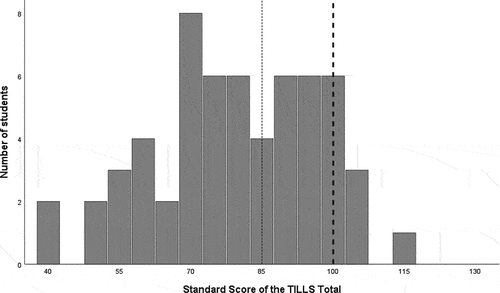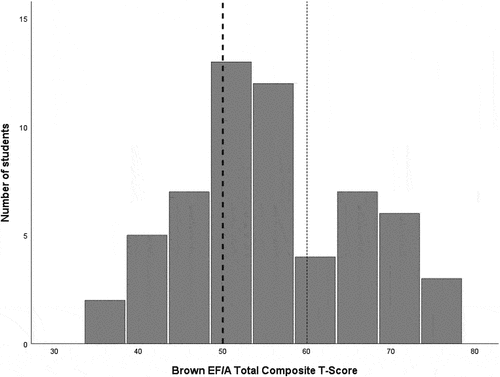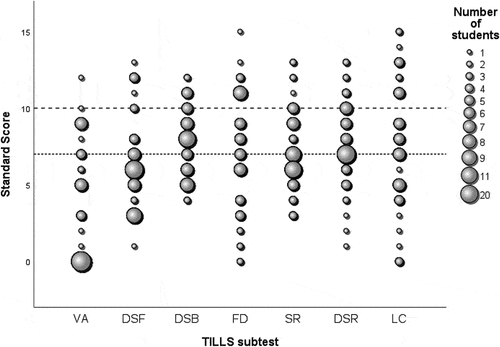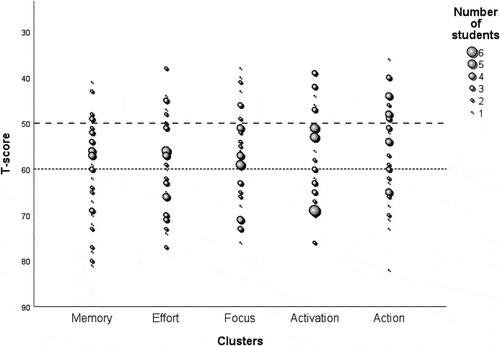Figures & data
Table 1. Description of TILLS subtests and Brown EF/A clusters most relevant to comprehensibility of classroom instruction.
Figure 1. Histogram indicating group distribution on the TILLS.

Figure 2. Histogram indicating group distribution on the Brown EFA.

Figure 4. Frequency of TILLS subtest standard scores.

Table 2. Descriptive statistics and one sample t-tests on TILLS subtests.
Figure 5. Frequency of Brown EF/A cluster T-Scores.

Table 3. Descriptive statistics and one sample t-tests on Brown EF/A clusters.
Table 4. Responses from students with average language and typical attention.

